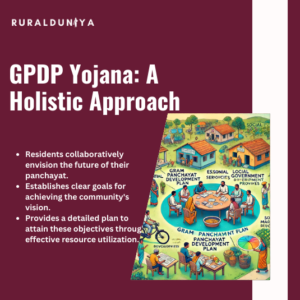The Ken Betwa Link Project is a key venture within India’s National Perspective Plan aimed at remedying severe water scarcity through strategic river interlinking.
This innovative water transfer initiative seeks to revitalize the water-deficient regions of Bundelkhand by enhancing the hydrological connectivity between the Ken and Betwa rivers.
Ken Betwa Link Project: Blueprint for Water Sustainability
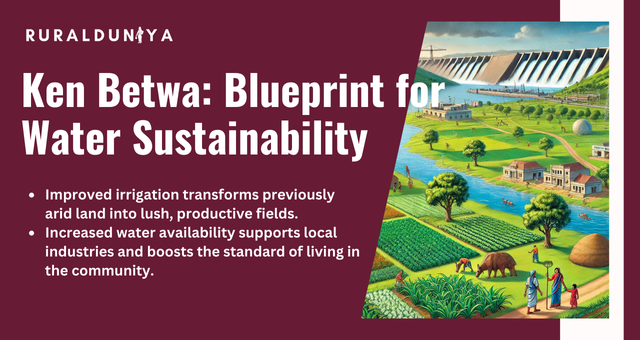
Ken Betwa Link Project introduces a sustainable approach to solving the environmental and socio-economic challenges faced by the communities in Madhya Pradesh and Uttar Pradesh.
By improving water availability of 1,020 MCM (million cubic meters), the initiative is set to boost agricultural productivity, sustain local industries, and elevate the quality of life, demonstrating a significant leap in integrated water resources management.
Benefits of the Ken Betwa Link Project
The project is set to deliver substantial advantages, including:
- Enhanced Irrigation: Irrigates 6.35 lakh hectares, boosting agricultural productivity and supporting water-intensive crops in drought-prone areas.
- Improved Water Supply: Provides reliable drinking water to approximately 62 lakh people, alleviating chronic water scarcity in Bundelkhand.
- Flood Management: The Daudhan Dam will help manage seasonal floods, protecting communities and farmland in the region.
- Hydroelectric Power Generation: Generates 78 MW of clean energy, contributing to regional power needs and promoting renewable energy use.
- Economic Boost: Stimulates economic development through increased agricultural outputs and job creation, enhancing the overall quality of life for the local population.
Ken Betwa Link Pariyojana
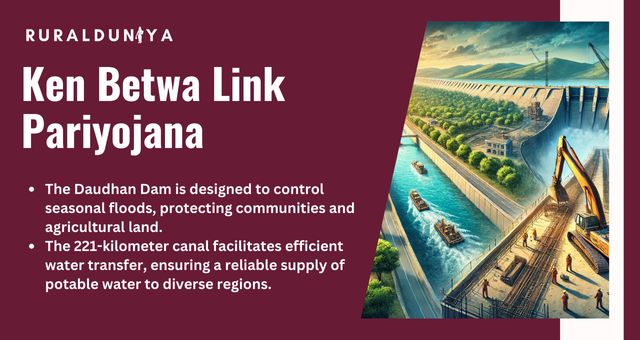
Envisioned as a groundbreaking component of India’s river linking strategy, this project involves the construction of the Daudhan Dam and a 221-kilometer canal to facilitate water transfer between the Ken and Betwa rivers.
It represents an extensive effort to manage floods, enhance irrigation, and ensure a steady supply of potable water across diverse ecological and geographical landscapes.
Ken Betwa Link Project Details
The project, with an investment of about ₹35,111 crores, aims to irrigate over 6.35 lakh hectares, helping approximately 9 lakh farmers enhance crop yields and providing reliable drinking water to about 62 lakh residents.
It also includes plans for a 78 MW hydroelectric facility, contributing to regional energy needs and promoting renewable energy sources.
Ken Betwa River
These rivers are crucial to the region’s hydrological cycle. Originating from the Jabalpur district, the Ken River has an unpredictable flow of 427 kilometers before merging with the Yamuna, while the Betwa, starting from the Vindhya Range, traverses through arid zones.
Their interlinking is designed to optimize water distribution and storage, addressing seasonal water variability.
Controversy Surrounding the Ken Betwa Project
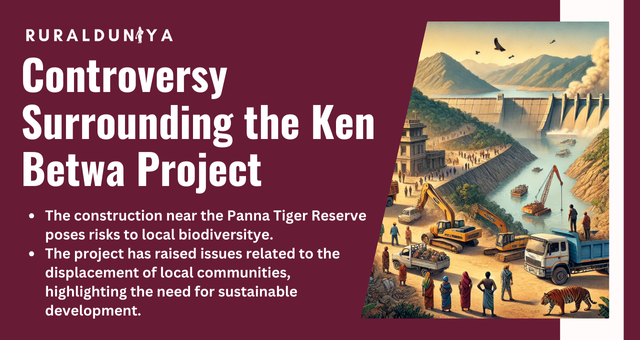
The project has not been without its critics, who raise significant concerns regarding its environmental and social impacts. Environmentalists argue that the construction of Daudhan Dam and the extensive canal system.
It will disrupt the local ecosystems, particularly affecting the Panna Tiger Reserve. There are also concerns about the displacement of local communities and the long-term sustainability of such large-scale water diversion.
Ken Betwa Map
Impacting several districts such as Panna, Chhatarpur, Tikamgarh, Vidisha, Banda, and Mahoba, the project’s extensive mapping and planning ensure precise and efficient water management.
The canal paths are strategically designed to align with existing water flows and topographical features to minimize environmental impacts.
Ken Betwa Dam
The Daudhan Dam, to be situated near Panna, is poised to become a pivotal structure for flood management and drought relief.
The resultant reservoir will not only store substantial water up to 2,324 million cubic meters but also support local fisheries, creating new economic opportunities for nearby communities.
Ken Betwa Sangam
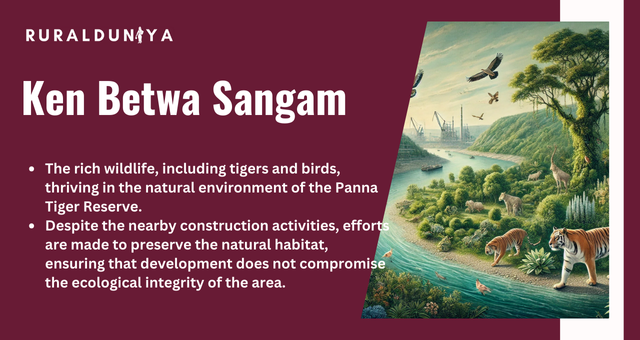
This confluence area is crucial for biodiversity conservation linked with developmental goals. Efforts to mitigate the project’s impact on the adjacent Panna Tiger Reserve are key, ensuring that progress does not undermine the local wildlife and their habitats.
Ken Betwa Canal
Featuring advanced engineering, the canal system is designed with water conservation technologies to prevent leakage and enhance the durability of the infrastructure.
Automated gates and lined channels will ensure efficient and controlled water distribution, tailored to meet the regional agricultural and urban demands.
Ken Betwa Tender
The tendering process attracts expertise from across the globe, involving firms skilled in executing large-scale hydraulic projects. This strategy ensures adherence to international standards in water management and leverages cutting-edge sustainable practices.
Ken Betwa Link Project UPSC
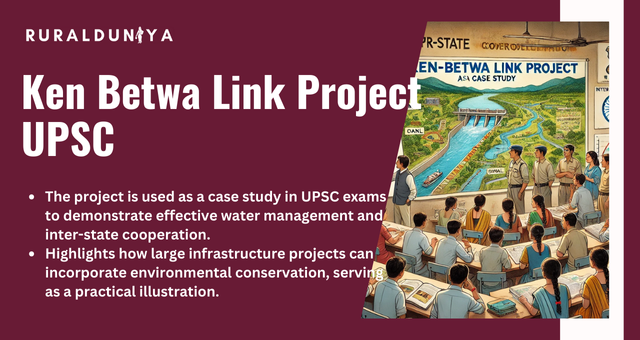
For UPSC examinees, the project serves as a critical example of sustainable development, inter-state cooperation, and advanced water resource management. It provides a practical illustration of how large-scale infrastructure projects can be aligned with environmental conservation efforts.
Future Impacts
As a flagship model within India’s river interlinking framework, the Ken Betwa Link Project stands as a testament to innovative water management strategies aimed at achieving sustainability and resilience in water-stressed regions.
Its comprehensive approach promises not only to resolve immediate water issues but also to set a benchmark for future projects in integrated river basin management.
FAQs
What is the Ken Betwa Link Project?
The Project is an initiative to transfer water from the Ken River to the Betwa River, improving water availability in India’s Bundelkhand region.
Why was the Ken Betwa Link Project started?
It was started to combat water scarcity, enhance irrigation, provide drinking water, and support hydroelectric power generation in drought-prone areas.
What are the main benefits of the Ken Betwa Link Project?
The project aims to irrigate lands, supply potable water to millions, prevent floods, and generate electricity, fostering regional development.
How will the Ken Betwa Link affect local communities?
It will provide stable water resources for farming, increase job opportunities, and improve living conditions in the local communities.

Nishank is a social impact enthusiast with a solid foundation in public policy, micro-enterprise, and agribusiness. Growing up in a farmer’s family has given him a profound connection to rural communities, fueling his passion to empower people towards self-reliance. He completed his undergraduate studies at the Delhi University and earned a master’s degree in Rural Management from National Institute of Rural Development & Panchayati Raj in Hyderabad.

